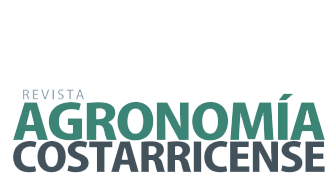Biology of the pineapple root borer Sufetula anania (Lepidoptera: Crambidae)
DOI:
https://doi.org/10.15517/dq584971Keywords:
Sufetula anania, Crambidae, Ananas comosus, life cycleAbstract
Introduction. Fresh pineapple production in Costa Rica is a profitable economic activity that is carried out in the Huetar Norte Region; it is recently affected by a new pest, Sufetula anania Solis and Hayden (Lepidoptera: Crambidae) which causes damage to the plant, with the capacity of destroying the root system. Objective. To determine the life cycle and ecology of the root borer S. anania in pineapple cultivation in the Northern Zone of Costa Rica. Materials and methods. The study was carried out in the laboratory of Research and Development, of Agroindustrial Piñas del Bosque Company, San Carlos, Costa Rica. Main biological aspects, life cycle and biometric parameters were determined and a breeding methodology was developed. Results. S. anania has a life cycle composed of 4 stages of development (egg, larva, pupa and adult) and is completed between 29 and 70 days; the duration in days of each life cycle stage was: eggs (7.10 ± 0.02), larvae: L1 (3.10 ± 0.31), L2 (2.20 ± 0.48), L3 (2.77 ± 0.57), L4 (4.53 ± 1.72), L5 (11.30 ± 2.71), pupae (8.63 ± 1.3), adults: female (7.29 ± 2.65) and male (5.25 ± 4.27). The laboratory breeding methodology was based on stem sections of vegetative pineapple suckers. Conclusion. S. anania can complete 6 to 12 life cycles per year depending on climatic conditions and food availability. During feeding, the larvae generate tunnels within the plant tissues that serve as places of refuge and protection.
Downloads
Downloads
Published
Issue
Section
License
Copyright (c) 2025 Agronomía Costarricense

This work is licensed under a Creative Commons Attribution-NonCommercial-NoDerivatives 4.0 International License.
The author (s) must authorize Revista Agronomia Costarricense Journal the right of its publication which will be registered with the Creative Commons Attribution-NonCommercial-NoDerivs 4.0 license. Author (s) may include their publication in an institutional repository clarifying that the publication was done in the Agronomía Costarricense Journal.
Once the volume of the respective period has been published, the digital version can be accessed, which allows managing a self-archive of the document or documents of interest, in the site selected by the author.
Otherwise, the main author must attest in writing, that the presented information is original and unpublished by any other media. Also, must have the authorization of the institution where the investigation was conducted.




